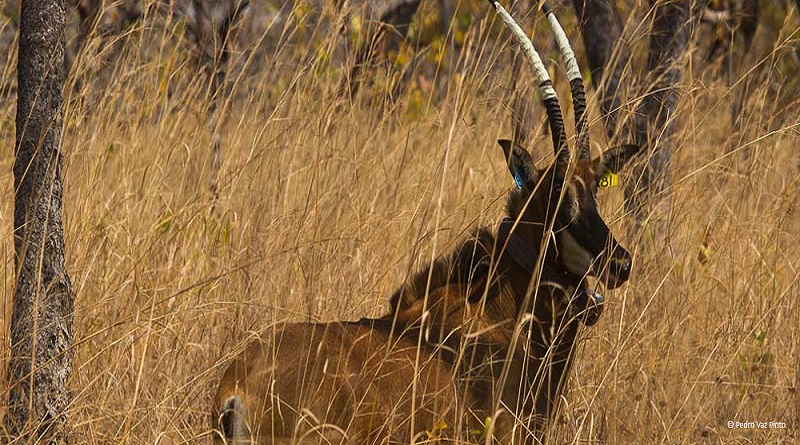UN body helps conservationists protect endangered Angolan antelopes
With help from United Nations Environment, conservationists have captured some of Angola’s endangered Giant Sable antelopes, fitting them with tracking devices and giving them the hope-inspiring names chosen for World Environment Day 2016.
The Giant Sable is a sub-species of sable antelope found only in Angola’s highland woodlands. An icon in the southern African nation, its sweeping horns of up to 150 cm in length adorn national symbols from banknotes and postage stamps to the shirts of the country’s football team.
More than 1,500 people voted online in the WED 2016 naming contest to support efforts to save the Giant Sable from extinction. The winning names were Milele, a Kiswahili word meaning ‘forever’; Avante, which is Portuguese for ‘forwards’; and Samrakshaa, Hindi for ‘protection.’
UN Environment’s WED campaign helped persuade companies involved in Angola’s offshore oil industry to sponsor several of the GPS and VHF collars fitted to the captured animals. Angola hosted the global celebrations for WED on June 5.
In August, rangers and wildlife experts deployed to the Luando Reserve, the last wilderness stronghold of the Giant Sable, and a nearby sanctuary in Cangandala National Park. They immobilized 22 antelopes from a helicopter with tranquilizer darts. Teams on the ground fitted 19 of them with GPS collars before quickly reviving and releasing them.
The three names were given to a four-year-cow who was pregnant with a precious calf, a 7-year-old territorial bull; and the 12-year-old matriarch of one of the few remaining herds.
Pedro Vaz Pinto, the Angolan biologist leading the conservation effort, said the team detected two additional Giant Sable herds in Luando. He estimated the total population stood at about 180 – more than previously thought.
“The not so good news is that poaching is still a major threat,†Vaz Pinto told UN Environment. “Five darted animals had nasty leg wounds. We had to operate on three of them to remove cable snares still stuck in their legs.â€
The collars will help rangers track the antelopes in Luando and also in Cangandala, where Vaz Pinto and colleagues have established a captive breeding program to assist Angolan Government efforts. The data will boost research, conservation and anti-poaching efforts around the little-studied animals.
“It will help us frame the various home ranges of existing herds and the correspondent bull territories,†Vaz Pinto said. “We want to develop a monitoring system based on the remote GPS information being passed in real-time to the rangers on the ground.â€
Known in Portuguese as the palanca negra gigante, the Giant Sable was almost wiped out during Angola’s long civil war. In 2005, camera traps captured images that confirmed its survival. But the animal remains critically endangered due to uncontrolled poaching.




